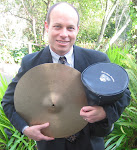Equity-efficiency trade-off
The higher the efficiency, the lower the equity, and the lower the efficiency, the higher the equity.
If health care was purchased without insurance, only the rich could afford the best care. Most people could afford some care. Equitable insurance for all reduces efficiency, however, and more health care is purchased than is needed by society, and it is purchased at higher prices. People with insurance spend too much money on health care. We could save money by banning insurance for all but the most expensive procedures. People would use only the health care they needed. However, it is highly unlikely that the American people want to go back to this type of system.
Cost-access trade-off
Similar to the equity-efficiency trade-off, the greater the access the greater the costs, and the less the access the less the costs.
The more people have access to health care, the higher the costs society will pay. Medicare and Medicaid spending is taking more and more of taxpayers’ dollars. Medicare and Medicaid costs can only be slowed by limiting access such as by using government panels to decide who gets care. Eventually, this will happen since Medicare and Medicaid are threatening to become the biggest spending items in the federal budget, pushing out spending for national defense and social programs.
Magic bullets?
Can everyone have access to world class health care without paying world class prices for it? According to health care expert and New York Times columnist Ezekiel Emanuel (Less than $26 billion? Don't Bother.), if an idea saves less than one percent of costs ($26 billion), it's probably not worth pursuing. For example, less than one half of one percent of costs ($26 billion) can be saved by accounting for and confiscating all the profits of health care companies ($11.7 billion). Similarly, savings from expanding generic drug use is likely to be small relative to total spending on drugs. Importing drugs from Canada doesn't add to much cost savings either ($5 billion per year). Emanuel writes that a 2009 study by the Congressional Budget Office on malpractice reform concluded that a package that among other features, capped punitive damages to $500,000, would save about $11 billion a year, less than one half of one percent of costs. Lastly, all the "million dollar babies" added together account for less than one half of one percent of costs. So where is the cost savings?
Real Cost Savings
Emanuel writes (Billions Wasted on Billing) that the real cost savings can be found by using electronic billing and credentialing--saving $32 billion a year. That's way over one percent of total costs and would make a difference to doctors, patients, and the government. Secondly, by using concierge care (high touch medicine) and bundling services (Saving by the Bundle) for the sickest ten percent of patients (who use up 64% of the costs)--we improve these patients' care and avoid sending these patients to the emergency room multiple times. Payment is "bundled." All "the bills are rolled into one standard ... charge" for a procedure, instead of the standard charge by fee for each doctor. All doctors and administrators must work together.
They have a strong incentive to eliminate unnecessary tests and treatments and use less expensive implants, drugs and devices that don’t compromise quality, and to prevent infections and other complications that could land the patient back in the hospital.Emanuel believes that $80 billion is a low estimate of cost savings from bundling. That's more than three percent of costs.





No comments:
Post a Comment